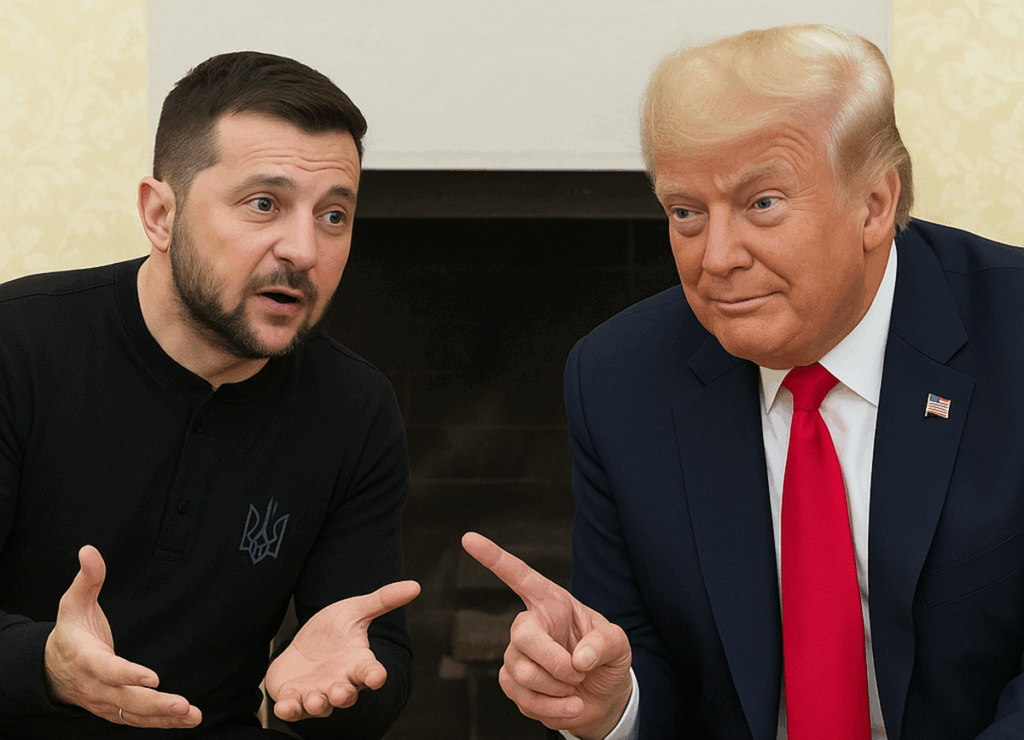U.S. and Ukraine Finalize Critical Minerals Deal Amid Push for Russia-Ukraine Ceasefire
By New Delhi Post Desk, New Delhi:
On May 1, 2025, the United States and Ukraine signed a landmark agreement, the United States-Ukraine Reinvestment Fund, granting Washington access to Ukraine’s vast reserves of critical minerals like titanium, uranium, and lithium. This deal, finalized after months of tense negotiations, aims to bolster Ukraine’s economic recovery while ensuring continued U.S. support in its ongoing war against Russia, as the Trump administration intensifies efforts to broker a ceasefire between the two nations.
A Strategic Partnership for Minerals and Reconstruction
The agreement establishes a joint investment fund to tap into Ukraine’s mineral resources, with both countries contributing equally and sharing management responsibilities. Ukrainian Prime Minister Denys Shmyhal described it as an “equal partnership,” emphasizing that it will attract global investment for Ukraine’s reconstruction while ensuring Kyiv retains control over its resources. U.S. Treasury Secretary Scott Bessent highlighted the deal’s message to Russia: “The Trump administration is committed to a peace process centered on a free, sovereign, and prosperous Ukraine over the long term.” However, the deal still requires ratification by Ukraine’s parliament.
Overcoming a Rocky Negotiation History
Negotiations for the deal faced significant hurdles, nearly collapsing in February 2025 after a heated Oval Office meeting between U.S. President Donald Trump, Vice President J.D. Vance, and Ukrainian President Volodymyr Zelenskyy. Ukraine initially rejected terms that favored U.S. interests, but the final agreement ensures that only new U.S. military aid counts toward Washington’s share, safeguarding Ukraine’s European Union aspirations. Economy Minister Yulia Svyrydenko, who signed the deal in Washington, noted its 10-year duration and focus on new mineral, oil, and gas licenses, with 50% of revenues funding the joint initiative.
Critical Minerals and Their Geopolitical Weight
Ukraine holds about 5% of the world’s critical mineral reserves, including titanium, uranium, lithium, and graphite—essential for aerospace, nuclear energy, and electric vehicle batteries. The U.S. has long sought to reduce its reliance on China, the dominant producer of rare earth elements, making this deal a strategic move. However, 40% of Ukraine’s mineral resources are in Russian-occupied areas, raising questions about accessibility and the deal’s long-term viability without a resolution to the conflict. Critics argue that the agreement prioritizes U.S. commercial interests over Ukraine’s security, as it lacks explicit military guarantees, a key demand from Zelenskyy.
Ceasefire Talks and Ongoing Tensions
The deal coincides with Trump’s push for a Russia-Ukraine ceasefire, though progress remains elusive. Trump, critical of U.S. spending on the war, warned during a Cabinet meeting that military aid could be halted if negotiations stall, a move that could cripple Ukraine’s defense against Russia, which has occupied 20% of its territory since 2022. Russia rejected a proposed 30-day ceasefire, with Foreign Minister Sergey Lavrov claiming Ukraine’s interest in a truce stems from battlefield losses. Kremlin spokesman Dmitry Peskov acknowledged Washington’s urgency but called the conflict too complex for a quick resolution, while Putin expressed readiness for direct talks without preconditions.


